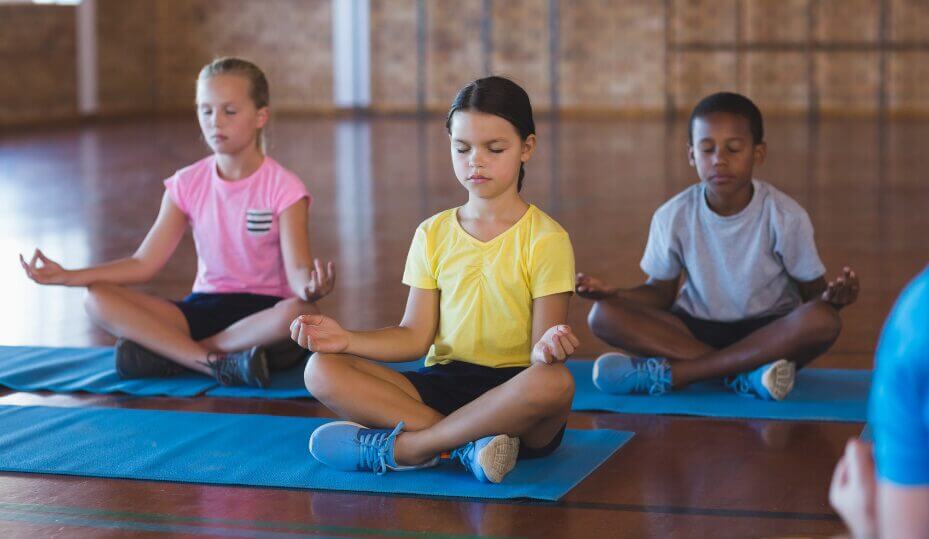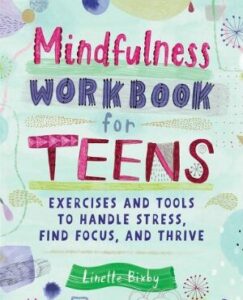
Mindfulness for Kids: Engaging Ways to Teach Focus and Calm
Introducing mindfulness activities to children at a young age can have lasting positive effects on their mental and emotional well-being. As our world becomes increasingly fast-paced and demanding, it’s essential to equip kids with the tools they need to navigate through life’s challenges.
As a quick reminder, mindfulness is the practice of bringing one’s attention to the present moment in a non-judgmental manner, fostering awareness, compassion, and self-regulation.
Mindfulness activities for kids should be engaging and age-appropriate, allowing children to experience the benefits of being present and aware in a way that resonates with them. These activities can help improve focus, reduce stress, and promote emotional resilience as children learn to be kinder to themselves and others.
Key Takeaways
- Mindfulness activities for kids promote presence, self-awareness, and emotional resilience.
- Engaging and age-appropriate exercises help children experience the benefits.
- Incorporating mindfulness into daily routines can have lasting positive effects on mental and emotional well-being.
Some of the links on this page may be affiliate links which means I might earn a few pennies if you click through and make a purchase.
The Benefits of Mindfulness for Kids
Enhancing Focus and Concentration
Introducing your kids to mindfulness practices can significantly improve their focus and concentration. By bringing a gentle, accepting attitude to the present moment, children can become more aware of their thoughts and feelings. This heightened awareness can lead to better attention and self-regulation, which can positively impact their academic performance.
Here are a few activities to enhance focus and concentration:
- Deep breathing exercises
- Guided imagery
- Mindful listening (this meditation by Abby is fabulous for kids)
Improving Emotional Regulation
You can also help kids to improve their emotional regulation. By teaching kids to be present and aware of their feelings, they can learn to manage stress and anxiety more effectively. This enables them to recognize their emotions and express them appropriately, fostering better mental health and well-being.
Consider incorporating these activities into your child’s routine:
- Yoga for kids
- Body scan meditation
- Gratitude journaling (this gratitude journal is good for all ages and the stickers are fab)
Building Resilience and Self-Esteem
Through practicing mindfulness, children can build their resilience and self-esteem. They will learn self-compassion and how to cope with various challenges, resulting in a higher sense of self-worth and confidence. By developing these important traits, they’re better equipped to face obstacles in life.
Try these activities to encourage self-esteem and resilience in your child:
- Affirmation cards
- Mindful self-compassion exercises
- Mindful coloring (I love this book!)
Being a part of your child’s mindfulness journey sets the foundation for a happier, healthier, and more balanced life. Encourage and support their practice, and you’ll start seeing the benefits reflected in their overall well-being and performance.
Essential Mindfulness Activities for Different Ages
Preschool Mindfulness Exercises
Introducing mindfulness to preschoolers can be a fun and engaging process! Start with mindful posing – simple yoga poses that help children feel strong and brave while focusing on their breathing. You can try poses like the tree or mountain pose. These activities will help your little ones understand the importance of connecting their mind and body.
Another method for engaging preschoolers in mindfulness is through the five senses activity. Encourage your child to explore their senses by guiding them to focus on what they see, hear, smell, taste, and feel in their environment. This will help them be more aware of their surroundings and develop an appreciation for the present moment.
Lastly, you can incorporate some movement exercises to connect mindfulness with physical activity. A simple game like “freeze dance” where kids dance to music, and when the music stops, they freeze in a pose while taking deep breaths will help develop self-awareness and focus on their present state.
Activities for School-Aged Children

As children grow, they benefit from more complex activities. Introducing yoga practices at this age can help school-aged children manage stress, increase focus, and develop emotional resilience. You can find kid-friendly classes online or teach them some basic yoga poses like the cat-cow or warrior pose.
Meditation is another tool that can be very beneficial. Guided meditations specifically designed for children, like this short pebble meditation, can help them practice relaxation in an age-appropriate manner.
For children with ADHD, consider incorporating mindful listening activities to help improve concentration and focus. You can use music designed for kids, guiding them to pay attention to the different sounds and rhythms of the music.
Another way to engage school-aged children in mindfulness is by using creative expression, such as drawing or coloring. You can find plenty of worksheets online that will encourage them to express their emotions, thereby enhancing self-awareness and emotional regulation.
Activities for kids should be enjoyable and accessible, as this promotes a healthy relationship with mindfulness that can continue throughout their lives.
Incorporating Mindfulness into Daily Routines
Teaching your kids mindfulness activities can greatly impact their daily life. Incorporating these practices into their routines can help with attention problems, relationships, and combating bullying. Here are some ways to integrate into your child’s everyday life.
Mindful Listening and Communication
Encourage deep listening in your child by dedicating a few minutes every day for them to practice being fully present while listening. Have them sit quietly and identify the sounds around them, whether it’s the rustling of leaves or the humming of home appliances. This will help improve their focus and develop better communication skills. You can also incorporate the practice of kindness during conversations by having them become aware of how their words may affect others.
Mindful Eating Practices
Practicing mindful eating can be a simple yet effective way to create better eating habits and cultivate awareness. Encourage your child to slow down during meals and actively pay attention to the taste, texture, and smell of their food. You can also implement a gratitude practice before or after meals, where they list or share a few things they are thankful for.
Here are some mindful eating tips to try:
- Breathe deeply before starting the meal
- Take smaller bites
- Chew slowly and savor the flavors
- Put down the utensils between bites
- Practice gratitude and appreciation for the meal
Integrating Mindfulness with Play
The importance of play cannot be overstated (for everyone). Integrate mindfulness into their playtime by incorporating activities that emphasizemindful breathing and self-awareness. For instance, you can choose games or toys that encourage relaxation and focus. Use playtime as an opportunity to teach your child about empathy, self-regulation, and resilience in the face of challenges.
These activities can help transform your child’s daily routine into a more meaningful and enriching experience, setting them up for success in attention, relationship-building, and emotional well-being.
Practical Tools and Resources for Mindfulness
When you teach mindfulness, you may feel it is quite the task, but luckily there are plenty of helpful tools and resources available to make the process smoother. Let’s explore some of these resources in the areas of books, videos, apps, and online resources.
Books and Videos for Kids

There are numerous books available that can help teach kids about mindfulness. These books usually incorporate fun stories and illustrations to introduce mindfulness exercises, guided meditations, and compassion in an age-appropriate manner. A few popular books include Sitting Still Like a Frog and The Lemonade Hurricane.
Along with books, videos can also help engage and teach children about mindfulness. One popular resource is the YouTube channel “Mindful Schools“.
Free Mindfulness Apps and Online Resources
There are also plenty of apps available to help support mindfulness practices for kids. As I mentioned before, I have found the free Insight Timer to have a wealth of content with age-appropriate exercises. You may also try Smiling Minds app.
In addition to apps, you’ll find numerous helpful online resources dedicated to exercises and guided meditations for kids. One such resource is Waterford.org, which provides a list of things that can be easily used in the classroom or at home.
By making use of these practical tools and resources, you can effectively teach this invaluable skill and how it fits into their daily lives.
Overcoming Challenges When Teaching Mindfulness to Kids
Addressing Common Obstacles
When teaching mindfulness to kids, you may encounter a variety of challenges. One common issue is managing children’s emotions, such as anger or depression (I love this meditation for little ones). To address this, create a safe space where children feel comfortable expressing their feelings and can learn to recognize and accept these emotions.
Another obstacle is the development of social skills and empathy. Incorporate group activities that encourage children to practice active listening and cooperation with one another. For instance, I used to use a glitter jar to teach my daughter a calm-down technique and build her self-esteem.
Engaging Reluctant Youngsters
Some children may be less interested in participating in these activities. Be patient and use these tips to engage them:
- Be a role model: Practice mindfulness in your daily life, and show them its benefits through your own actions.
- Generate curiosity: Tell stories or show videos about the positive effects of mindfulness, such as enhanced mental health and well-being.
- Start small: Begin with short, simple activities, like mindfulness games for kids and teens, that are easy to understand and enjoy.
Tracking Progress and Adjustment
Tracking your child’s progress is a good way to find works for them and make necessary adjustments (we do the same for ourselves after all). Creating a simple progress chart with some help from your kiddo.
| Area of Improvement | Week 1 | Week 2 | Week 3 |
|---|---|---|---|
| Emotions Management | |||
| Social Skills | |||
| Self-esteem |
Be sure to have them involved in the process of filling it out since it is a great way to get their feedback.
The key to successfully teaching mindfulness for kids is to remain flexible, approachable, and open to change. You should always be adaptive to meet the unique needs of each child.







